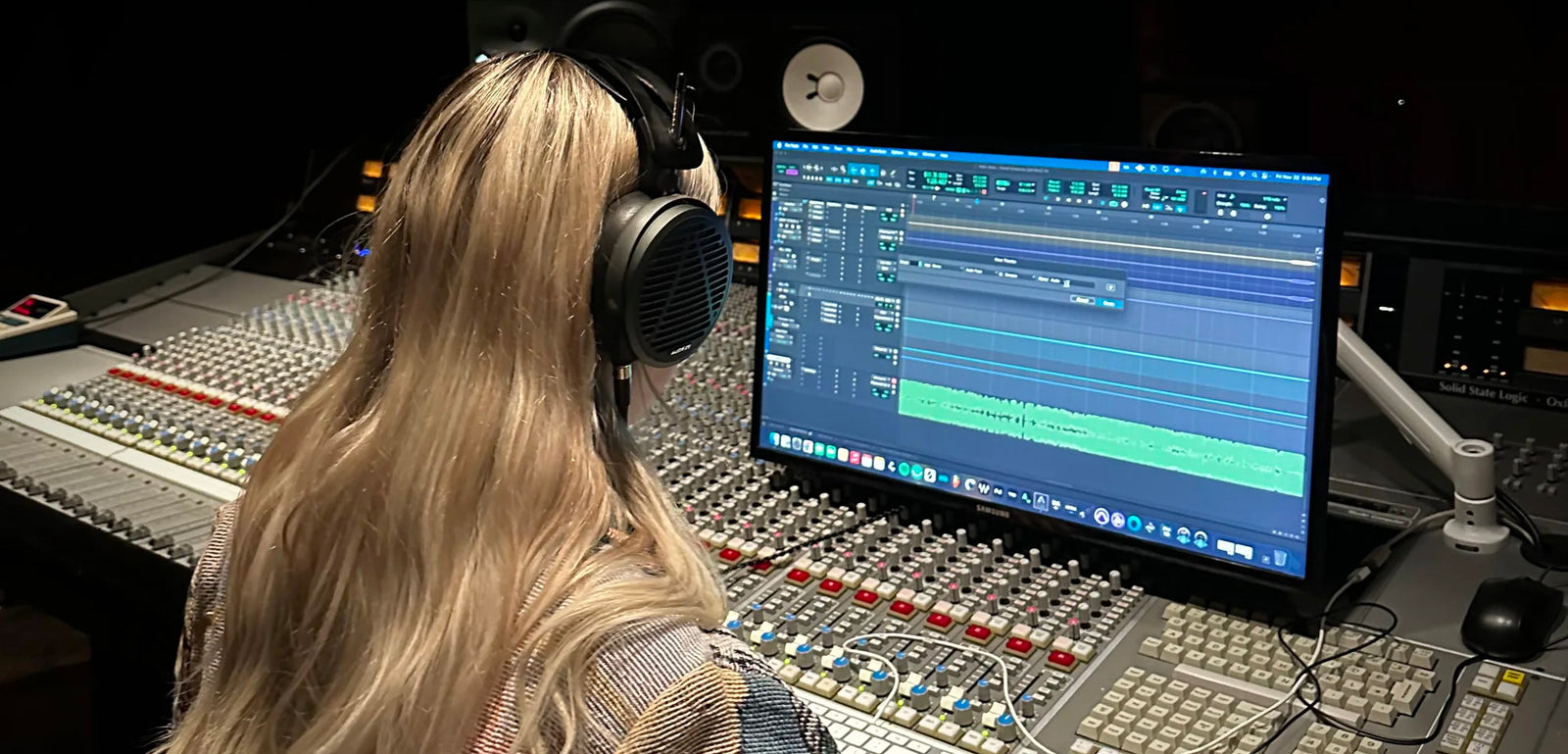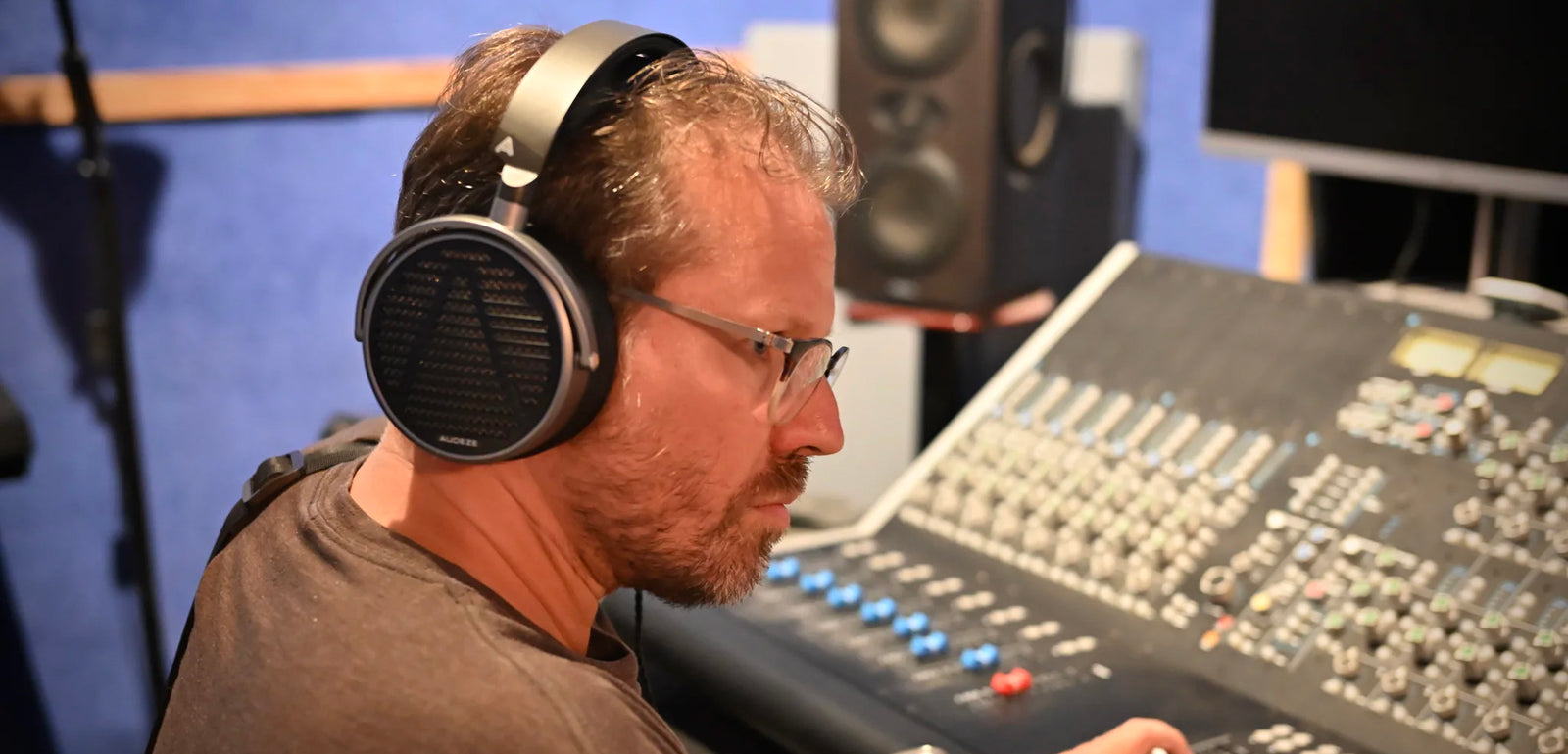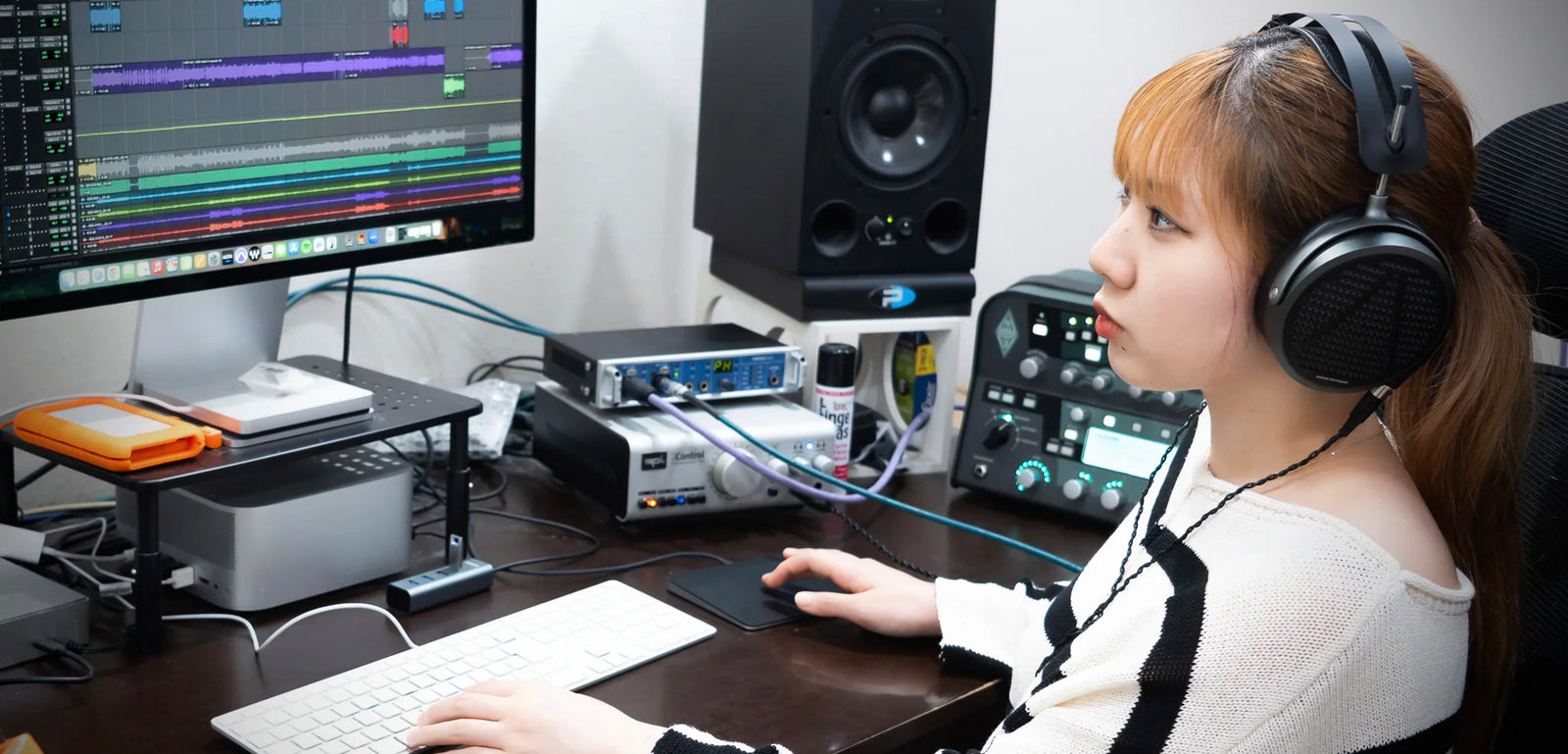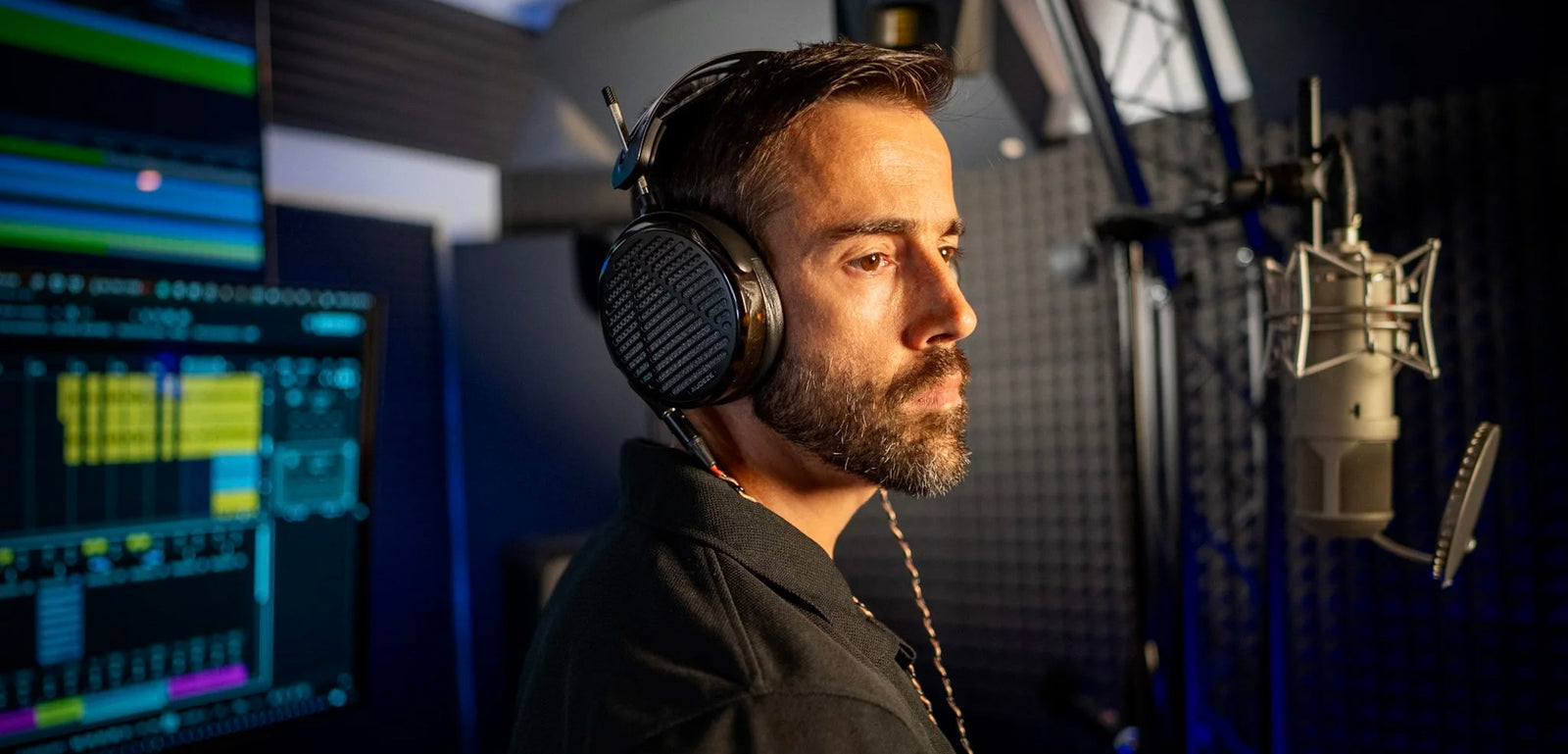
Angie Randisi is a highly acclaimed recording engineer and mixer from Canada, with three Grammy nominations and multiple platinum records to her name. Known for her technical prowess and keen ear, Angie has worked with some of the biggest names in the industry, including Lil Baby, Young Thug, Tory Lanez, 42 Dugg, Glorilla, and PartyNextDoor.

Josh Rogosin defined the tiny desk sound and has recorded and mixed over 800 shows, including Taylor Swift, Sting and Shaggy, Anderson .Paak, Mac Miller, Nile Rogers, and Bono and the Edge. His mixes have been heard on YouTube over a billion times. Now he’s introducing Global Sound and Ghost Light Concerts, traveling the world to discover how location inspires people to make music.

Li-sa-X is a Japanese female Guitarist/Composer who was born in 2005. Her cover video of RACER X's "Scarified," which she posted when she was 8 years old, garnered more than 5 million views and attracted a lot of worldwide attention. After watching this video, the composer of the song Paul Gilbert (MR. BIG) invited her to join his online guitar school as a scholarship student. She made her professional debut at the age of 12. Her playing technique has been described as “the future of rock."

Santaflow is an artist, composer, producer, entrepreneur, teacher and showman, politically incorrect and with millions of followers around the world (mainly in Spanish-speaking countries). After more than 20 years of career, he feels fitter and more eager than ever to continue creating songs and making them sound better every day. A restless lover of the world of sound, he works with several of the leading brands in the sector.
April 29, 2023
Born in Cologne, Germany, Ottmar Liebert began playing guitar at 11. Before the age of 19, Liebert had intended to stay in Germany and pursue a career as a designer and photographer. However, while journeying extensively through Asia and playing with other travelers and local musicians, he realised that he could not escape a life of music. Liebert has since become one of the most successful instrumental artists of the past decades, entertaining audiences around the world and releasing a catalog of 33 classic albums and counting!

There is always something special about one’s first album. In my case that album was “Nouveau Flamenco”. It was released on an Indie label in April of 1990 and became the biggest selling instrumental acoustic guitar album, going Platinum in the USA, USA/Latin, Australia, New Zealand, and Gold in Canada and Mexico. That kind of thing happens only once in a blue moon. My favorite albums are not necessarily the ones that were the most popular: ”Fete” is one of my faves, as are “three-oh-five” and “slow”. From the 90’s “Opium” and “The Hours Between Night + Day” stand out for me. In terms of performing, opening for Santana was a highlight because it created a full circle from seeing Carlos in 1975 to touring with him twenty years later. I also loved playing several concerts with the New Mexico Philharmonic.
When my son was born I started to engineer my own recordings, out of necessity because I only had a few hours here and there to work in the studio. I discovered that I loved being alone while recording guitar, and while mixing and mastering the recordings. The late, great Doug Sax once asked why I continued to come to him for mastering when the mixes already sounded good. I took this to heart since Doug had great ears. So these days I end up being guitar player and engineer and producer.
My family didn’t have a TV until I was about 12. That was around the time that I started taking classical guitar lessons… because we lived in a small apartment and there was no way I would be allowed to play electric guitar. My dad built loudspeakers for our first stereo himself and by then I was 14. I remember going to see Weather Report, the amazing lineup with Jaco Pastorius, Alejandro Acuna, and Manolo Bandrena. I remember being so shocked and moved when I discovered Miles Davis.
I went to an art-highschool and for a couple of years I spent more time with art and in art museums than I spent with music. I find that painting and photography use the same basic elements as does music. The line is a melody; colors are chords; stacked lines are rhythm. Then I heard Miles Davis. I felt that Miles Davis was the Picasso of music, reinventing himself several times in his life. After hearing him I was in love with the trumpet, but decided to play guitar and think more like a trumpet player, with the breath. The guitar, as well as the piano, can easily tempt the player into a continuous fountain of notes. I find it helpful to think of the breath, either the trumpet or singing. Often I arrive at a melody by singing it first. The first concert I ever went to was Santana, with
the opening act Earth, Wind & Fire, in 1975. I remember buying the live album “Lotus”, which Santana released in 1974, and listening to it over and over. My favorite moments of Carlos’s soloing is when he sings. It’s the best description of it - singing. He is the melody man, something I aspired to ever since.
When I finished an album I used to feel empty and wrung out. I would get frustrated by that and attempt to power through that feeling. Now I realize that it’s part of a natural cycle. Creating an album of music is like talking for a long time. Your throat dries out and you need to drink. In my case there is nothing that doesn’t improve after a long walk.
I try to change my palette for every album. For the album “slow” I used the half-speed playback of ProTools quite often. Guitar rhythms sound so different when played back at half-speed. A Bossa Nova rhythm becomes so languorous and liquid. One tool that has become most important over the years is headphones. I went from occasionally using headphones to check the stereo placement of tracks while mixing a piece to mixing with headphones and only sometimes checking the mix on speakers. I love headphones and have a lot of them.
When a young person asks me for advice, I always tell them that my advice is to find another profession. If they have to be a musician they will follow that path anyway. I can’t imagine how hard it is to walk down that path these days. But that’s a whole conversation by itself.
I discovered Stax ear speakers (they didn’t like to call them headphones) when I was in my teens. I bought a pair after my first album was out. In 2013 I received a pair of Audeze LCD-2 and fell in love with them. I mixed my album “Bare Wood” almost entirely on those headphones. I have also used In Ear Monitors since 1994. We wanted to recorded a live album that year and needed to clean up our stage volume. In addition I always hated the way my guitar sounded through wedges (stage monitors). After eliminating potential feedback frequencies with the EQ the guitar always ended up sounding like a banjo. With IEMs I could hear what the guitar sounded like. So headphones play a huge role in both the live and studio setting.
Last year I sold my home and studio in Santa Fe. Since then I have been working on putting together a new, portable studio – in Santa Fe I was working with a 2003 Mac and an ancient version of ProTools. I will work on my next album with a Sound Devices portable recorder and a laptop. So headphones will become even more important.
The Euclid IEMs let me listen to my work whenever and wherever. That's new for me, but I love it. Whether I am at home or on the road, I can trust the Euclid to make decisions about the sound. I really appreciate the MMCX plug that allows me to switch between different cables, including the Bluetooth Cipher cable. I can work on a piece on my laptop and then continue by listening on my phone.
I am working on an album of music that combines guitars with rhythms created from rain sounds, drips and drops. So I have been listening to a lot of rain recordings, to find moments that have a natural rhythm which I can build on. I think it's a way for me to work through feelings triggered by living in a drought for a long time - I lived in Santa Fe, New Mexico, for over thirty years.